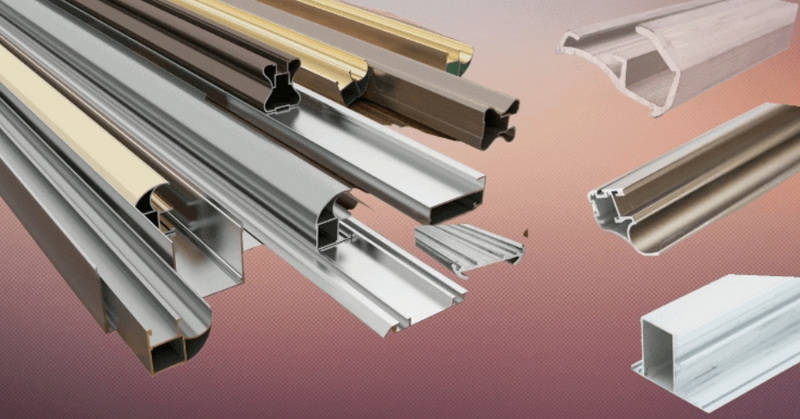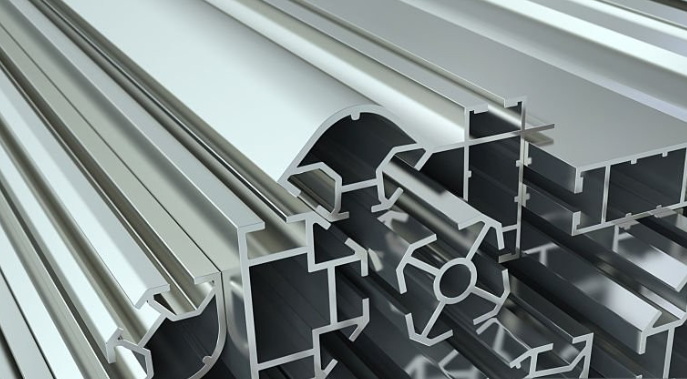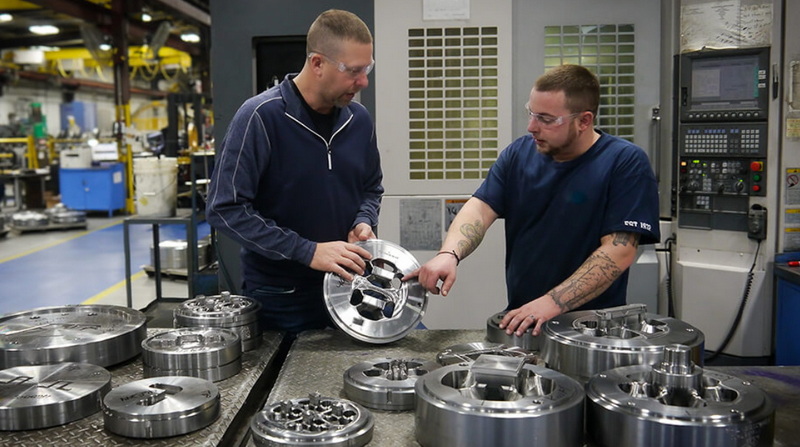Content Menu
● Understanding Aluminum Extrusion
>> Key Components of the Extrusion Process
● The Role of Die Design in Precision Manufacturing
>> 1. Material Selection
>> 2. Finite Element Analysis (FEA)
>> 3. Precision Machining Techniques
>> 4. Thermal Management
● Ensuring Uniform Material Flow
● Quality Control Measures
>> 1. Regular Inspections
>> 2. Testing Extruded Profiles
>> 3. Operator Training
● Innovations in Die Manufacturing
● The Importance of Surface Finish
>> Techniques for Achieving Superior Surface Finish
● Environmental Considerations
● Challenges Faced by Die Makers
● Future Trends in Aluminum Extrusion Die Making
● Conclusion
● FAQ
>> 1. What materials are commonly used for aluminum extrusion dies?
>> 2. How does finite element analysis help in die design?
>> 3. Why is thermal management important in aluminum extrusion?
>> 4. What role do operators play in maintaining precision during extrusion?
>> 5. How do innovations like additive manufacturing impact die making?
Aluminum extrusion is a crucial manufacturing process that allows for the creation of complex shapes and profiles from aluminum alloys. The precision of this process largely depends on the quality of the aluminum extrusion dies used. Aluminum extrusion die makers employ various techniques and technologies to ensure that these dies are manufactured with high accuracy, which directly influences the quality of the extruded products. In this article, we will delve into the methods and practices that aluminum extrusion die makers use to guarantee precision in manufacturing.

Understanding Aluminum Extrusion
Aluminum extrusion involves forcing heated aluminum billets through a die to create specific shapes. The process can be visualized similarly to squeezing toothpaste from a tube; as pressure is applied, the aluminum flows through the die, taking its shape. This method is widely used in various industries due to its efficiency and versatility.
Key Components of the Extrusion Process
- Billet Preparation: The aluminum is preheated to enhance its malleability.
- Extrusion Die: A specially designed tool that shapes the aluminum as it is forced through.
- Extrusion Press: A powerful machine that applies significant pressure to push the aluminum through the die.
- Cooling and Finishing: After exiting the die, the aluminum is cooled and may undergo additional treatments for strength and durability.
The Role of Die Design in Precision Manufacturing
The design of the extrusion die is critical for achieving precise dimensions and surface finishes in the final product. Here are some essential aspects of die design:
1. Material Selection
Choosing the right material for dies is fundamental. High-strength materials like H13 steel are commonly used due to their excellent thermal conductivity and wear resistance. This selection ensures that the dies can withstand high pressures and temperatures without deforming.
2. Finite Element Analysis (FEA)
Before manufacturing, die makers often use FEA simulations to predict how the die will perform under operational conditions. This analysis helps identify potential issues such as stress points or thermal variations, allowing for adjustments before production begins.
3. Precision Machining Techniques
Advanced machining processes, including CNC machining and wire EDM (Electrical Discharge Machining), are employed to achieve tight tolerances and smooth surfaces on dies. These techniques ensure that every detail of the die matches specifications, resulting in high-quality extrusions.
4. Thermal Management
Effective thermal management during extrusion is crucial. Dies must be preheated to prevent thermal shock and ensure uniform metal flow. Additionally, cooling systems are implemented to maintain optimal temperatures throughout the process, which helps avoid defects caused by overheating or uneven cooling.
Ensuring Uniform Material Flow
Uniform material flow through the die is vital for producing consistent extrusions. Aluminum extrusion die makers implement several strategies to achieve this:
- Die Geometry Optimization: The design of the die's cross-section must facilitate smooth flow of aluminum, minimizing turbulence and dead zones.
- Bearing Length Adjustments: The length of the bearing section within the die can be modified to control how quickly different sections of aluminum exit the die, ensuring uniformity across varying thicknesses.
- Flow Channel Design: Incorporating flow channels or feeders within the die can help direct material more evenly, reducing defects like warping or uneven surface finishes.
Quality Control Measures
To maintain high standards in aluminum extrusion manufacturing, rigorous quality control measures are essential:
1. Regular Inspections
Die makers conduct routine inspections of both new and existing dies to identify wear or damage. This proactive approach helps prevent issues during production.
2. Testing Extruded Profiles
After extrusion, samples are tested for dimensional accuracy, surface finish, and mechanical properties. This testing ensures that each batch meets required specifications before it is shipped to customers.
3. Operator Training
Skilled operators play a crucial role in maintaining precision during extrusion processes. Training programs focus on understanding equipment operation, process parameters, and troubleshooting techniques.
Innovations in Die Manufacturing
Recent advancements in technology have significantly improved precision in aluminum extrusion die making:
- Additive Manufacturing: Some companies are exploring 3D printing technologies for creating complex die geometries that were previously difficult or impossible to achieve with traditional methods. This innovation allows for rapid prototyping and customization of dies tailored to specific applications.
- Smart Monitoring Systems: Implementing IoT (Internet of Things) technologies allows manufacturers to monitor die performance in real-time, enabling immediate adjustments based on data analytics. These systems can track temperature fluctuations, pressure changes, and other critical parameters during production.

The Importance of Surface Finish
The surface finish of extruded products is another critical aspect that aluminum extrusion die makers focus on. A smooth surface finish not only enhances aesthetic appeal but also improves performance characteristics such as corrosion resistance and fatigue strength.
Techniques for Achieving Superior Surface Finish
- Polishing: Dies can be polished before use to reduce surface roughness, which translates into smoother extrusions.
- Coatings: Applying specialized coatings on dies can further enhance surface properties, providing better wear resistance and reducing friction during extrusion.
- Post-Extrusion Treatments: After extrusion, products may undergo additional finishing processes such as anodizing or painting to improve their surface characteristics further.
Environmental Considerations
As industries increasingly focus on sustainability, aluminum extrusion die makers are also adopting environmentally friendly practices:
- Recycling Scrap Material: Many manufacturers recycle scrap aluminum generated during production processes back into new billets, reducing waste and conserving resources.
- Energy Efficiency: Innovations in machinery design aim to reduce energy consumption during extrusion processes while maintaining high output levels.
Challenges Faced by Die Makers
Despite advancements in technology and methodologies, aluminum extrusion die makers face several challenges:
- Complex Geometries: As customer demands evolve towards more complex shapes with tighter tolerances, designing dies that can produce these profiles efficiently becomes increasingly difficult.
- Material Variability: Variations in raw material properties can lead to inconsistencies in extruded products. Die makers must adapt their designs and processes accordingly.
- Cost Management: Balancing precision manufacturing with cost-effectiveness is crucial for maintaining competitiveness in a global market.
Future Trends in Aluminum Extrusion Die Making
Looking ahead, several trends are likely to shape the future of aluminum extrusion die making:
- Increased Automation: Automation technologies will continue to evolve, enhancing production efficiency while reducing human error in both die making and extrusion processes.
- Advanced Simulation Software: As simulation tools become more sophisticated, they will provide even deeper insights into material behavior during extrusion, allowing for better design optimization before physical production begins.
- Sustainability Initiatives: The push for greener manufacturing practices will drive innovations aimed at reducing environmental impact throughout the entire lifecycle of aluminum products—from sourcing materials to end-of-life recycling.
Conclusion
Aluminum extrusion die makers utilize a combination of advanced techniques, rigorous quality control measures, and innovative technologies to ensure precision in manufacturing. By focusing on material selection, precise machining, thermal management, uniform material flow, superior surface finishes, environmental considerations, and addressing challenges head-on, these professionals contribute significantly to producing high-quality aluminum extrusions that meet industry standards. As technology continues to advance and customer demands evolve, aluminum extrusion die makers will play an essential role in shaping the future of this vital manufacturing process.

FAQ
1. What materials are commonly used for aluminum extrusion dies?
Aluminum extrusion dies are typically made from high-strength steel alloys such as H13 due to their excellent thermal properties and durability.
2. How does finite element analysis help in die design?
Finite element analysis allows designers to simulate how a die will perform under operational conditions, helping identify potential weaknesses before manufacturing begins.
3. Why is thermal management important in aluminum extrusion?
Thermal management prevents issues such as thermal shock and ensures uniform metal flow through the die, which is critical for achieving consistent product quality.
4. What role do operators play in maintaining precision during extrusion?
Operators are trained to understand equipment operation and process parameters, which helps them troubleshoot issues and maintain precision throughout production.
5. How do innovations like additive manufacturing impact die making?
Additive manufacturing enables the creation of complex geometries for dies that may not be feasible with traditional machining methods, potentially enhancing design flexibility and performance.






















